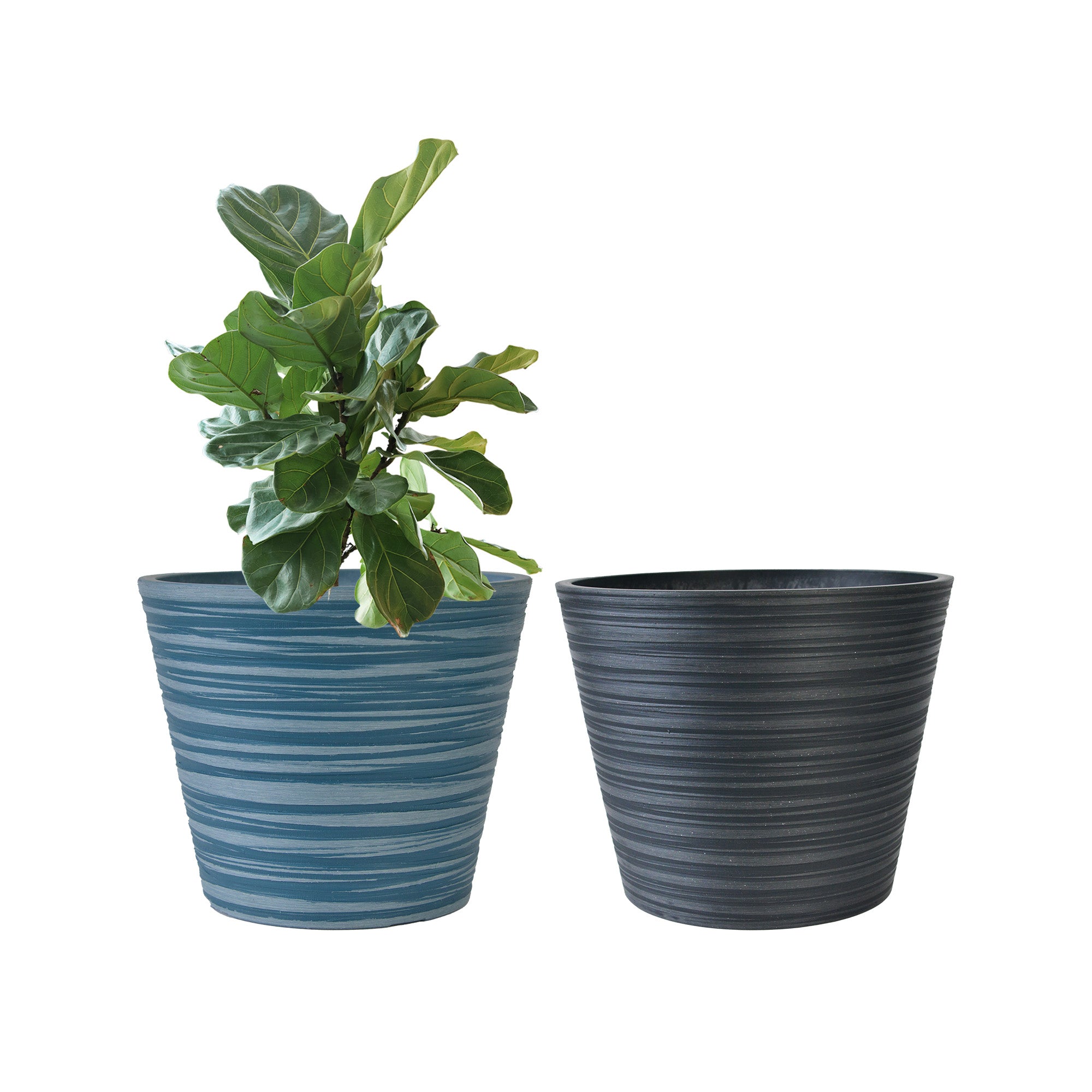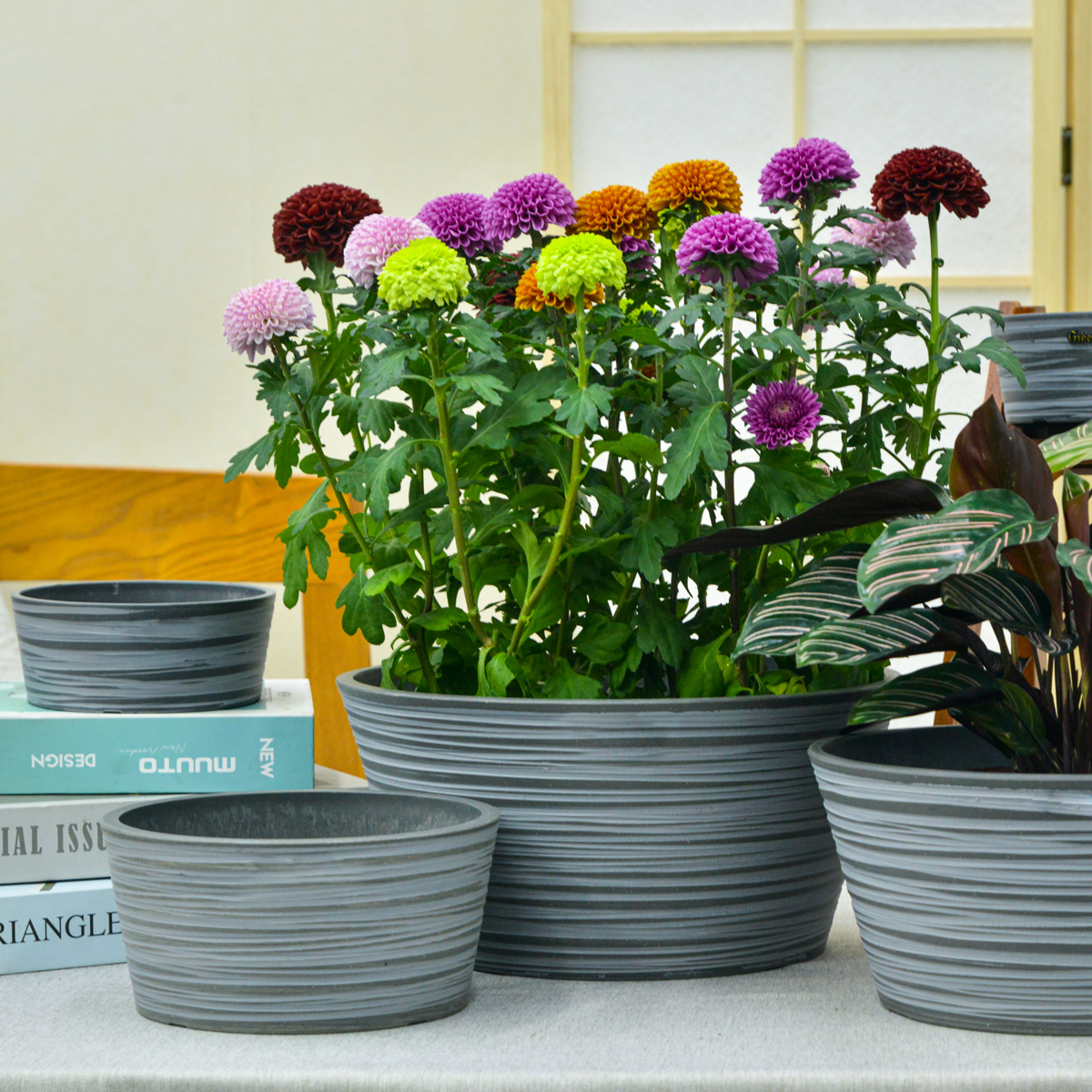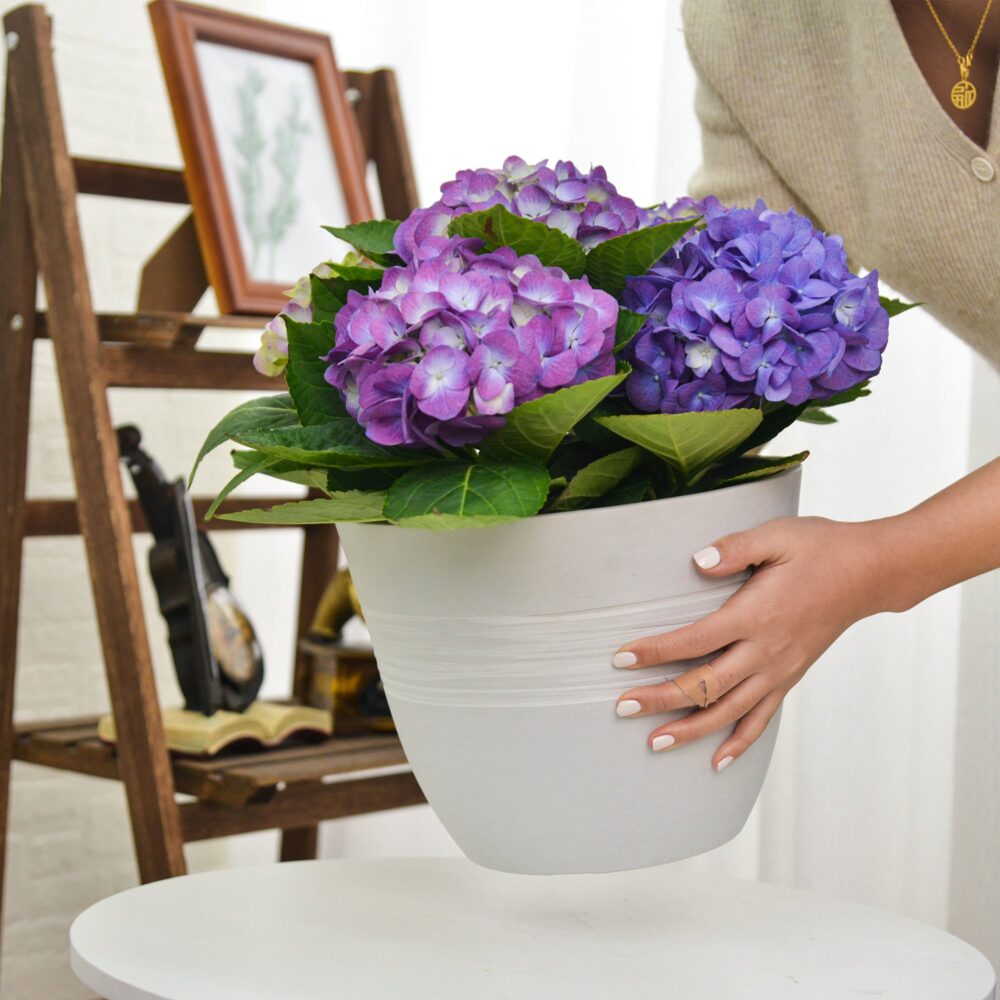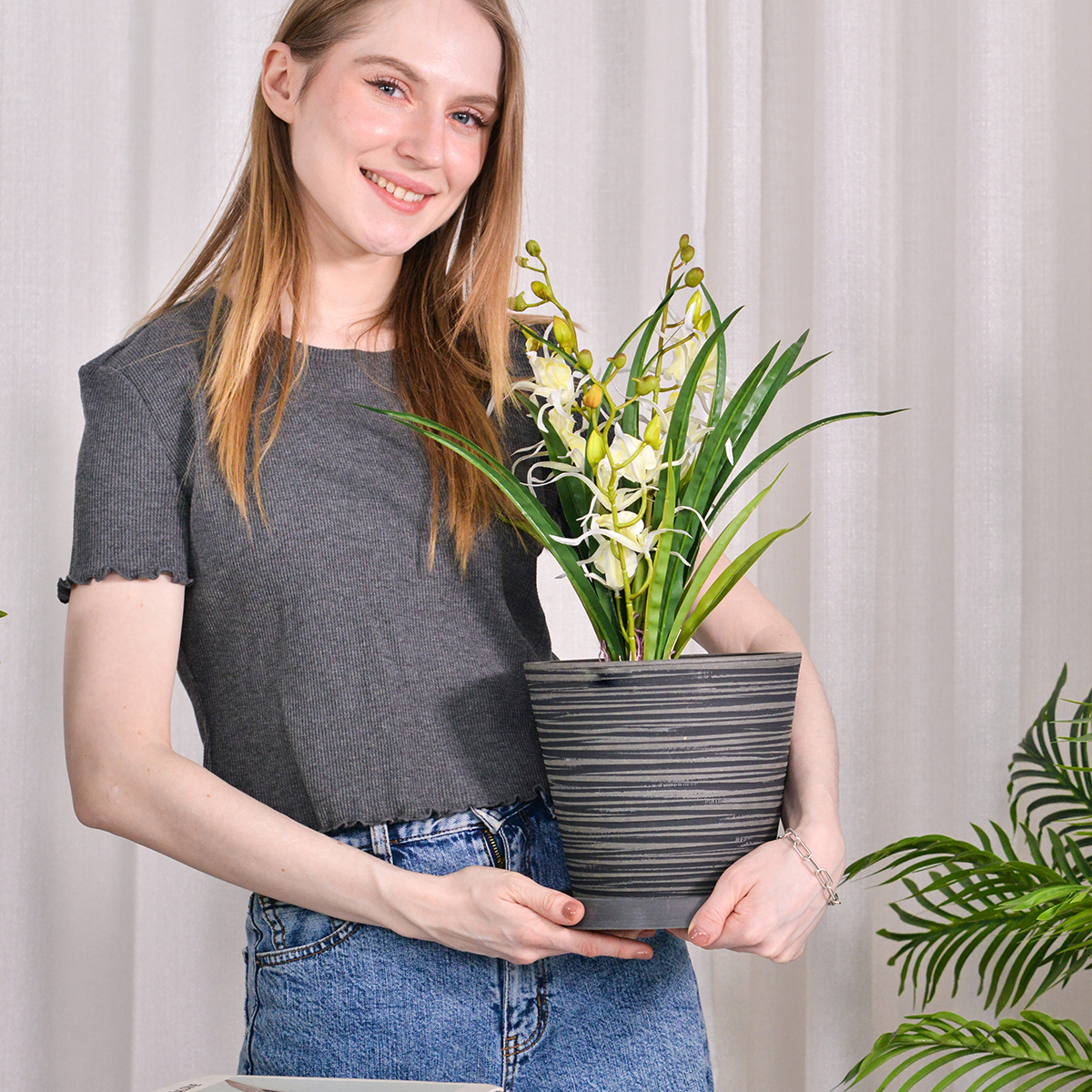How Do I Prevent My Planter From Leaking? Solutions for Watertight Gardening
A leaky planter can be a frustrating problem, leading to water damage on your patio, deck, or indoor surfaces. Whether it’s a slow seep or a steady drip, preventing leaks is essential for protecting your property and ensuring your plants receive the right amount of water. This guide will explore common reasons why planters leak and provide practical solutions to keep your gardening watertight.
Why Do Planters Leak? Common Causes:
Understanding why your planter is leaking is the first step in finding the right solution. Here are some common culprits:
- Drainage Holes: While essential for plant health, drainage holes are, by design, openings that allow water to escape. If you’re noticing water immediately after watering, this is likely the intended drainage. The goal isn’t to eliminate drainage but to manage the water that comes out.
- Cracks and Damage: Over time, planters made from materials like terracotta, ceramic, or even plastic can develop cracks due to temperature fluctuations, impacts, or general wear and tear. These cracks can allow water to seep out.
- Porous Materials: Some materials, like unglazed terracotta, are naturally porous and can allow some water to seep through the walls of the planter, especially when very wet.
- Poor Seals or Construction: For multi-piece planters or those with attached saucers, the seals or construction joints may not be watertight, leading to leaks.

Practical Solutions to Prevent Planter Leaks:
Here are several effective ways to prevent your planter from leaking and protect your surfaces:
1. Use a Saucer or Tray:
- The Simplest Solution: For most planters, especially indoors, the easiest way to manage drainage is to place a waterproof saucer or tray underneath the pot. This will catch any excess water that drains out, preventing it from damaging your floors or furniture.
- Choose the Right Size: Ensure the saucer is large enough to catch all the drained water, especially after a thorough watering.
2. Seal the Inside of the Planter:
- For Cracked or Porous Materials: If your planter has small cracks or is made of a porous material like unglazed terracotta, you can seal the inside to make it watertight.
- Suitable Sealants: Look for non-toxic, waterproof sealants specifically designed for use with garden containers or aquariums. Epoxy resins or silicone sealants can work well.
- How to Apply: Clean the inside of the planter thoroughly and allow it to dry completely. Apply the sealant according to the manufacturer’s instructions, ensuring you cover any cracks and the entire interior surface if dealing with porosity. Allow the sealant to cure fully before planting.
3. Line the Planter with a Waterproof Liner:
- A Versatile Option: Using a waterproof liner is an effective way to prevent leaks, especially for planters made of wood, wicker, or other materials that can be damaged by moisture.
- Suitable Liners: Options include thick plastic sheeting, pond liners, or even heavy-duty trash bags.
- How to Apply: Cut the liner to fit the inside of your planter, leaving some extra material at the top. Place the liner inside, molding it to the shape of the planter. You can secure the top edges with strong tape or by folding them over the rim. Make sure to cut drainage holes in the bottom of the liner to allow excess water to escape into the saucer.
4. Elevate the Planter:
- For Outdoor Use: If you’re concerned about water staining your patio or deck, consider elevating your planters slightly.
- Methods: Use pot feet, plant stands, or even a layer of gravel underneath the planter to create a gap between the bottom of the pot and the surface. This allows for better airflow and can minimize direct contact with any leaked water.
5. Choose Non-Porous Materials:
- Prevention is Key: When purchasing new planters, consider opting for materials that are naturally non-porous and less prone to leaking, such as plastic, glazed ceramic, fiberglass, or certain types of treated metal.
6. Repair Cracks Promptly:
- Address Damage Early: If you notice a crack in your planter, repair it as soon as possible to prevent it from worsening and causing leaks. Use appropriate patching compounds or sealants depending on the material of the planter.
7. Use a Two-Pot System:
- For Decorative Outer Pots: If you have a decorative planter without drainage, place your plant in a smaller nursery pot with drainage holes that fits inside the larger pot. This allows for proper drainage into the bottom of the decorative pot, which you can then empty as needed. This isn’t a direct leak prevention for the inner pot, but it protects the outer pot and your surfaces.
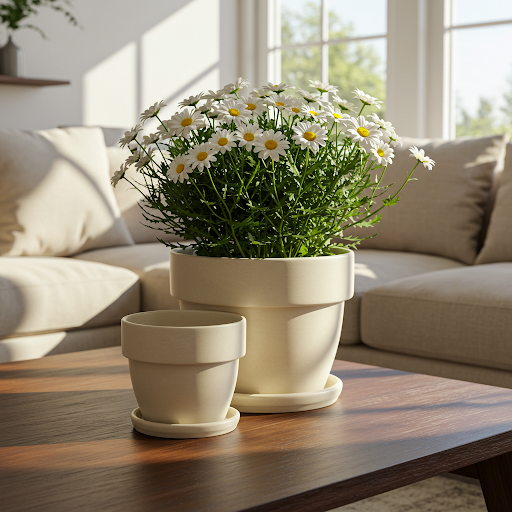
Important Considerations:
- Don’t Block Drainage Holes: Ensure that your chosen method doesn’t inadvertently block the drainage holes, as this can lead to waterlogged soil.
- Non-Toxic Materials: When using sealants or liners, always choose non-toxic options that are safe for plants.
Conclusion: Enjoy Worry-Free Gardening
Preventing your planter from leaking is a simple way to protect your home and ensure the health of your plants. By understanding the common causes of leaks and implementing these practical solutions, you can enjoy worry-free gardening and keep your surfaces dry and damage-free. Whether you opt for a simple saucer or a more involved sealing method, taking proactive steps will save you time and potential headaches in the long run.
Planter 5 in W / 8 in W / 12 in W or Indoor Outdoor Plants, Modern Decorative Plant Pots with Drainage Hole, Decorative Flower Pots
By greenship-seo|2025-04-10T06:37:58+00:00January 16, 2025|Categories: Hand-carving Series|Tags: Decorative Flower Pots|
k2-21G
By greenship|2024-08-13T06:17:26+00:00August 13, 2024|Categories: Hand-carving Series|
KC3-14A
By greenship|2024-08-16T06:26:30+00:00August 16, 2024|Categories: Hand-carving Series|
11THD
By greenship|2024-08-13T02:52:20+00:00August 13, 2024|Categories: Hand-carving Series|
Planter for Indoor Outdoor Plants, Set of 2 Modern Decorative Plant Pots with Drainage Hole, Decorative Flower Pots
By greenship-seo|2025-01-14T12:26:44+00:00January 14, 2025|Categories: Hand-carving Series|Tags: Decorative Flower Pots|
K2-11T
By greenship|2024-08-13T04:21:25+00:00August 13, 2024|Categories: Hand-carving Series|

